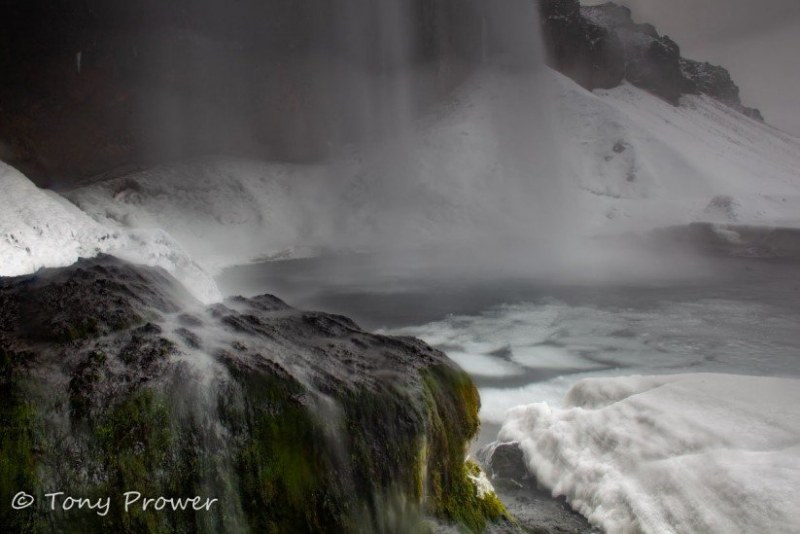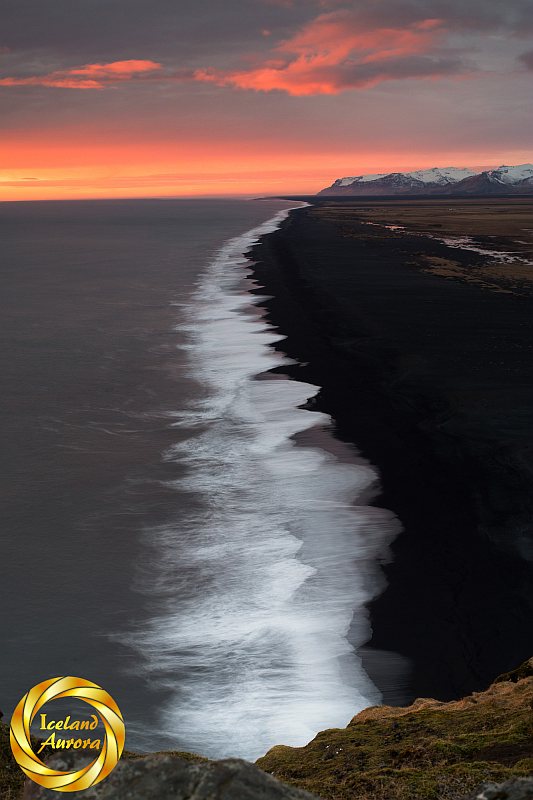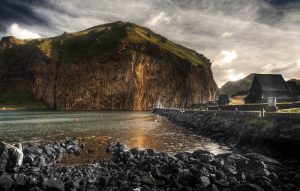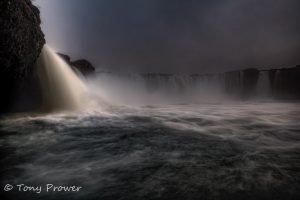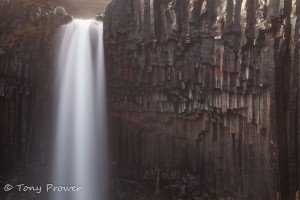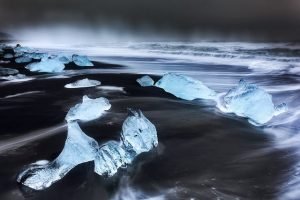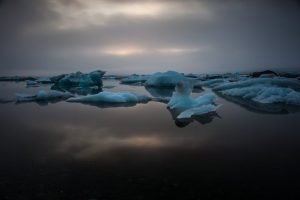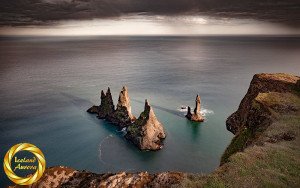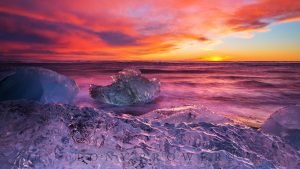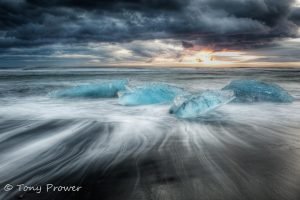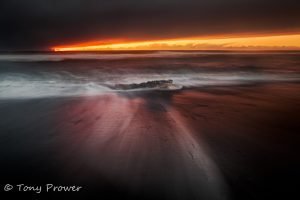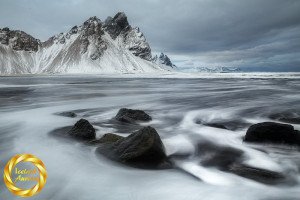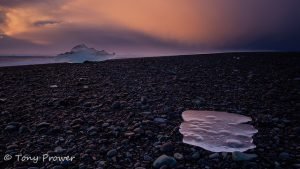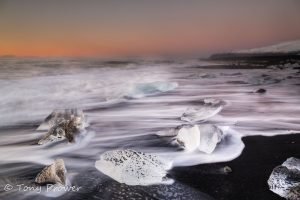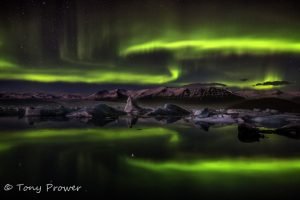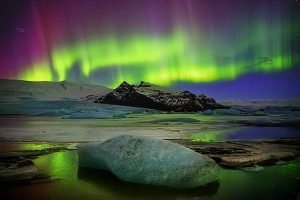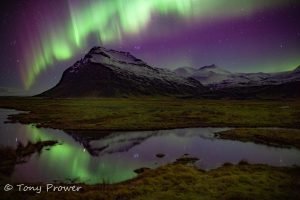Think of your composition as telling a story.
1) Background; this is normally the sky but not necessarily. It could be a sheer mountainside, glacier or other.
2) Middle ground; this would typically be the ground leading to the background, it could be a field, ocean, desert or any interesting terrain.
3) Foreground; this is the ground directly in front of you. It might be a rock, water feature, foliage or any other interesting feature.
Small Group Ice Caving
Middle ground
The middle ground is the main gist of the story, it tells the viewer what area you were in, it usually contains the most information in your shot although not so much detail. In a story, the middle ground would be your main story because it is the part of your photo that contains the most Landscape. This is where the viewer will get the main information about distances and the over-all feel of the landscape. It is the height of the camera that determines how what proportion of the picture is the Middle Ground. For example, the photo from a drone could include 100 miles of glacier landscape and could fill the entire frame. That same hundred miles could be reduced to a thin slither if you rested you camera on the ground.
The photo above was taken from a high viewpoint to allow the gentle shape of the black sand to dominate the photo. A photo from the beach below wouldn’t be able to communicate so much distance.
Background
The background could be communicating the weather conditions. As the background is likely to contain sky, it is likely to communicate the weather at the time you were there. The sky communicates depth in the way that closer clouds are high in the scene. If there are shadows made from the clouds falling on the middle ground, the viewer will make a connection and understand the depth of the landscape better. The clouds and colours are able to provide a summary of the mood and atmosphere of the shot.
I consider the ‘Background’ when I decide on my focal length. For example, a mountain range with textures and a reasonable sky would suit 24mm. This focal length will capture good details while capturing a lot of the mountain. It would also allow for a good amount of sky and a strong foreground. If the sky is boring, I might prefer a 50mm to capture part of the mountain with even better details and only a thin slice of sky.
The background content can be important for considering your aperture and focal point. If there are background objects that deserve to be sharp, then you would work with a small aperture (e.g.f/14-16) with a focal point at the Hyper-focal distance. Conversely, if the background is clouds and a horizon, then a closer focal point and higher quality aperture (e.g.f/8-9) can be used.
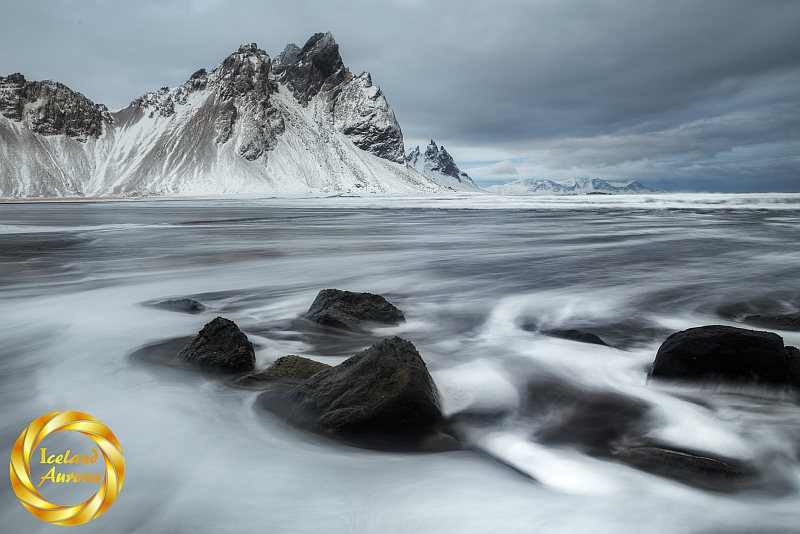
Using my Canon EF 24mm Prime Lens, I can fill a good portion of my photo with the mountain whilst retaining good details and a good portion of sky.
Foreground
The foreground contains most of your finer details, it is like an introduction and tells the viewer more about the middle ground, it tells the viewer so much about where you were when you took the shot. Again, the foreground will determine my focal length If I wat to get really close to the foreground – so I can touch it – and still include the landscape – I will use a wide angle lens such as 24mm. If I am using a super wide, such as 14mm then I have to get right over the foreground so the lens is almost touching it.

Considering a photo as a story can be useful if you are careful to show how the elements of a scene relate to each other. For example; if there is a water feature, try to show the river or stream and where it flows from. If there is some random lava, try to show a crater in the background.A photo doesn’t have to have all these 3 grounds to be good, but it is useful to try to convey the whole story in a landscape scene.
What does this scene communicate?
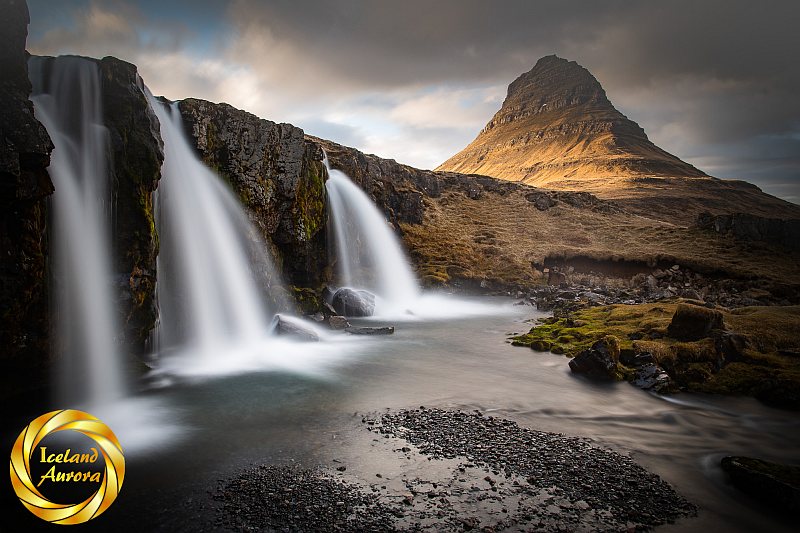
The flowing water suggest movement. The sky suggests a storm, but the light on the mountain suggest that is is breaking up. The metallic grey suggests coldness, the orange colours suggest autumn. There is a conflict going on here in terms of the changing seasons, there are many other conflicts, such as old mountain versus new waterfall. Despite the conflicts, the interaction of the elements suggests a certain harmony.
